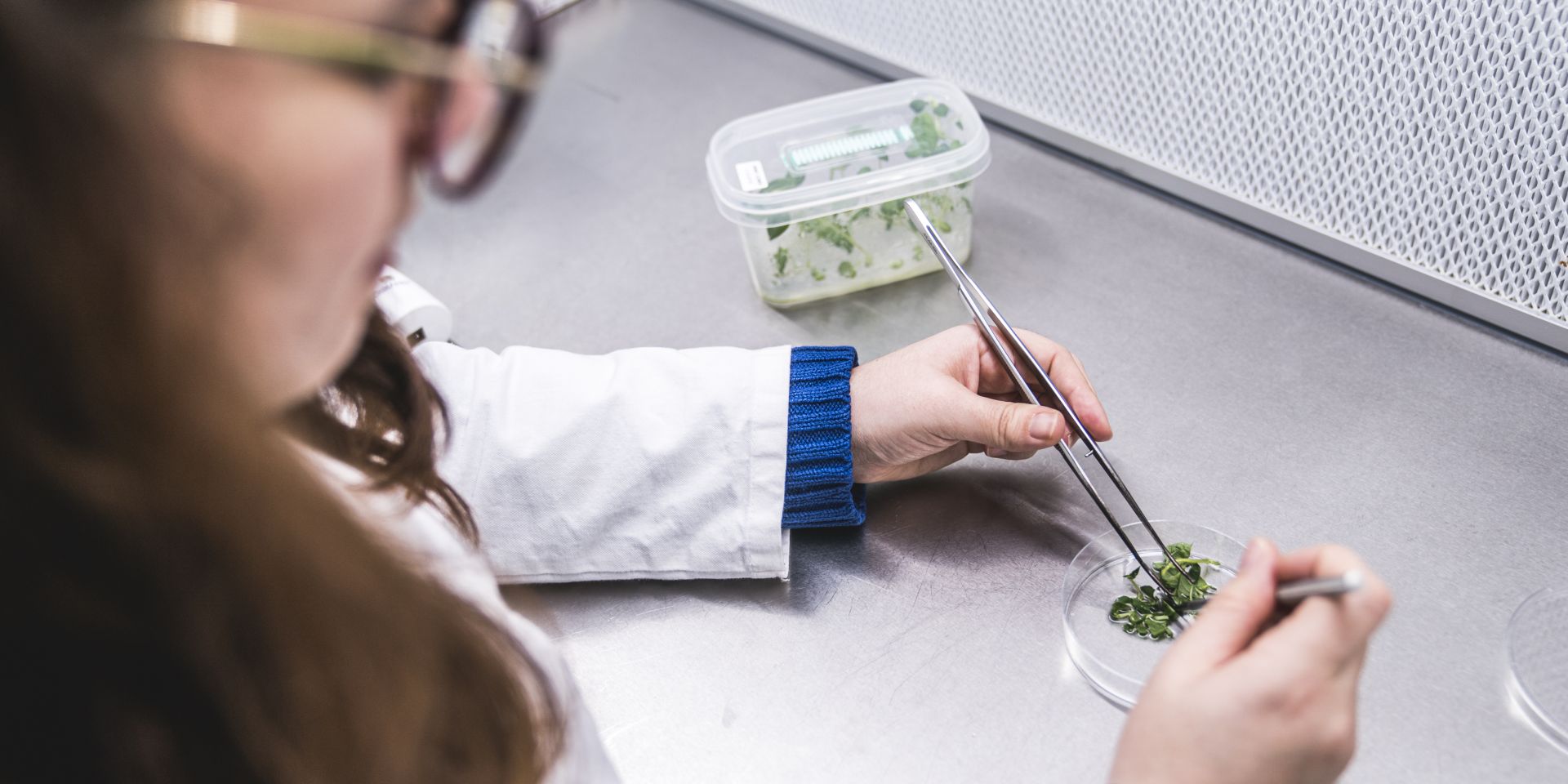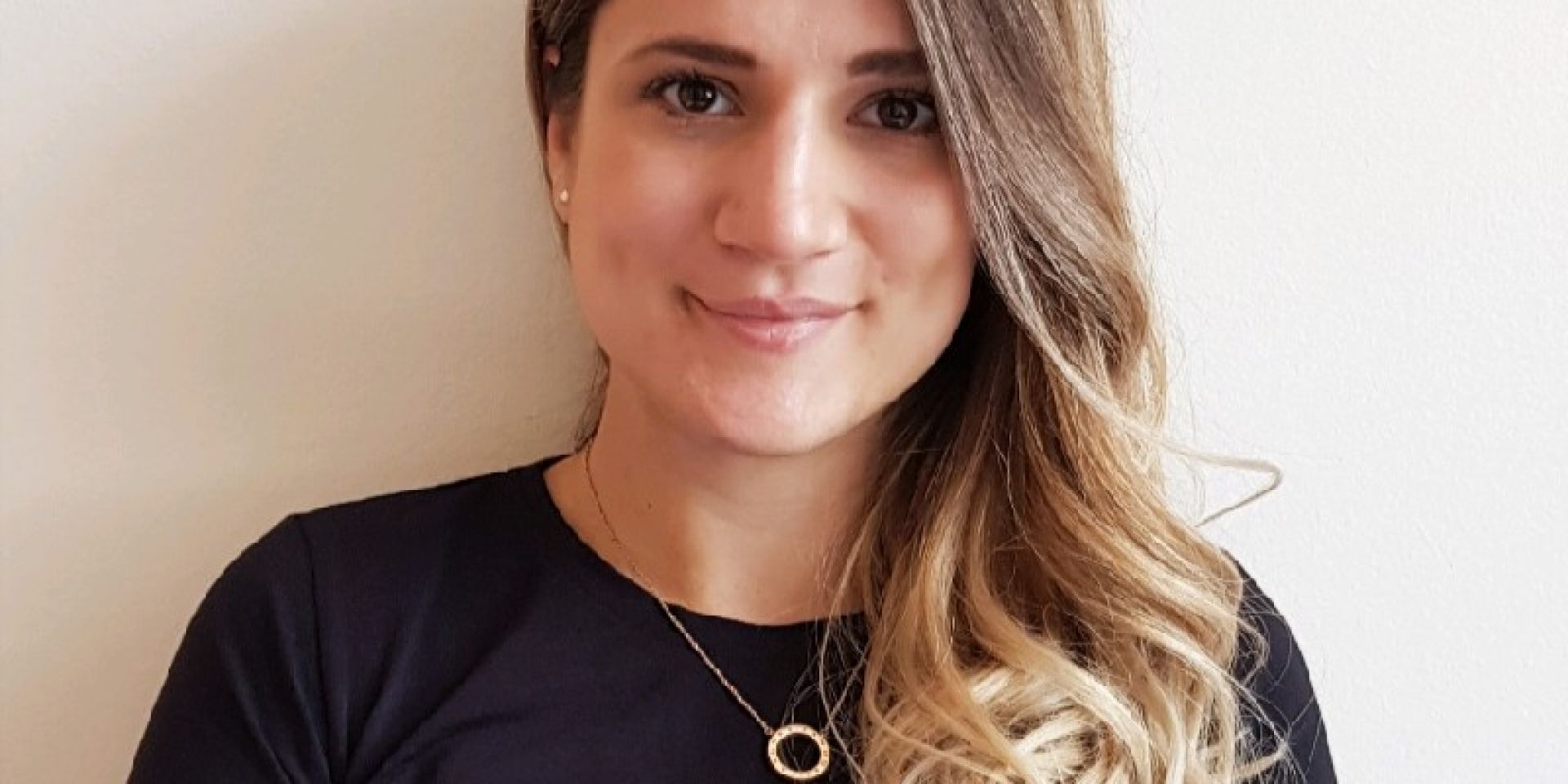Research
Innovation for vital and resistant varieties

Innovation for vital and resistant varieties
Sustainability is high on the agenda in the world of potatoes. HZPC is working on more vital and resistant varieties and, in turn, reducing the use of chemicals. The motto is: lower input, greater output. So we can do what we believe in, which is supporting food security across the globe. This is possible with the potato, which can be grown under any conditions and delivers high yields with relatively little water.
We maintain a strong focus on Research & Development in order to ensure we continue to fulfil the needs and wishes of customers, consumers and growers with new and existing varieties. In 2020, we took some important steps for both now and the future.
Over the past few years, we have made huge strides in a revolutionary potato innovation: hybrid potato varieties. In a hybrid potato, two diploid inbred strains are combined. The botanical seed that is created from this crossing then becomes the variety. The seed can then be used to create potato tubers.
As a result, you can make genetic progress much more quickly. This breeding method has been applied for some time to crops such as sugar beet but the process is a little more complicated for potatoes. Nevertheless, we took on this challenge a decade ago. And we have been very successful: HZPC is one of the few companies that can apply this revolutionary technology. In 2021, we expect to create the first prototype of a hybrid potato variety. We then expect this potato variety to be put on the market in Central Africa and Asia in 2025. After a successful introduction, other areas will follow. The focus for the market introduction primarily lies in areas where we currently find it hard or impossible to sell seed potatoes. We are thus creating access to new markets, for HZPC, with these new hybrid varieties.
They grow from a tuber as well as from seed.
Transporting seed is much less risky and the chance of transferring diseases is much lower.
Transporting seed is cheaper and easier. Ideal for countries that are hard to reach.
Where imports of seed potatoes are difficult or prohibited, seeds offer a genuine solution.
We have far greater influence on the features of hybrid potato varieties
With hybrid breeding, we can make varieties disease-resistant within 4 to 5 years. With classic breeding, the same process would take 10 years.
We can adapt a potato variety much quicker and thus better capitalise on the wishes and requirements of our customers.
In the long-term, the development of hybrid potato varieties will change the whole breeding process. HZPC wants to ensure it maintains its leading role in potato breeding after this change. Growing from seed, however, is not a replacement for the traditional seed potato process.
It could be one of the greatest mysteries in the world of potatoes: how is it that seed potatoes sometimes grow much better and quicker than other times? In order to answer this question, HZPC has been collaborating with partners in the research project Flight to Vitality since 2018.
The research combines data about size, growth speed and the homogeneity of potato plants with biochemical measurements which provide insights into the composition of potato varieties. It has become clear that conditions (e.g. climate, soil type and humidity) have very little influence on germination power.

The research focuses on variations in seed potato composition. A combination of fungus and bacteria (microbiomes) probably play an important role in this context. Metabolites, which supply energy and building materials to the plant, also impact upon the vitality of the potato.
At the end of 2021, the research into metabolites and microbiomes was concluded and has offered a breakthrough for the seed potato sector. Nobody has ever identified specific factors that influence germination power before. And this is important information because it means the vitality of seed potatoes can be more effectively predicted. This, in turn, leads to lower waste and a greater chance of a successful harvest. That's great news for growers, processors and food supply worldwide.
In tetraploid potato breeding, HZPC has made huge progress with respect to improving the resistance of potato varieties. The demand from seed potato growers for virus-resistant varieties is ever-increasing. We have a package of resistance that fulfils the demands of our customers, particularly with respect to the emerging, younger varieties, which have secured their position on the market over the past five years. Thanks to molecular markers, we can also make a more stringent selection much quicker too. A plant grown from a seed is all we need to read off the required characteristics from the DNA and make choices. Subsequently, we can select multiple resistance at an early stage and can then make selections for the right quality and high yield at a later stage.
Gene editing is a technique that allows us to develop absolute resistance much more quickly than with classic breeding. EU legislation, however, believes that this produces genetically modified organisms (GMO).
A study on behalf of the European Commission has now established that gene editing could play an important role in increasing the sustainability of food production. The research has also revealed that the legislation relating to GMO, which came into force 20 years ago, is no longer suitable for the scientific progress that has been made in this context.
HZPC is arguing for the legalisation of gene editing for crops in the EU as it is vital if we are to make potato growing more sustainable and ensure food security. This research has opened the door to new legislation.

With gene editing, you create mutations which you can also find naturally, in the existing DNA. This is not the same as GMO. GMO takes the DNA from one plant and transfers it to another plant.

In December 2020, the first phase of renovation of the research centre in Metslawier was concluded with new offices. In the coming months and years, the building and laboratories will be updated too.

Commercial breeder HZPC
As a breeder, I develop new potato varieties. My focus lies on seed potatoes for the retail market, particularly in Europe, North America and Australia. These potatoes differ in various ways from potatoes that are destined for the traditional market in Africa and Eastern Europe, for example, which is the focus area of my colleague Jeroen Bakker. The team of breeders is completed by Peter Vos who concentrates on varieties for the potato processing sector and Wichard Sander who works on varieties that are suitable to tropical conditions. Of course, wherever possible, we combine forces; potato varieties that work well in Africa could also be suitable for Spain, for example.
I was very impressed by the research facilities and the approach to breeding. We are genuinely on the front-line of science.
When I started working for HZPC a year and a half ago, I was extremely impressed with the research facilities and the approach to breeding. We are genuinely on the front-line of science. This was one of the most important reasons for me coming to work here. The depth of knowledge among all the researchers combined with the practical experience and the technologies that we have at our disposal is what makes HZPC unique. It’s great to be able to develop better varieties using the very latest breeding methods.
I am able to thrive in an organisation like HZPC, which has an open and informal culture. The mentality suits me. You are given the space to offer your opinions and there are plenty of people with refreshing, new ideas and the enthusiasm to implement them. That works really well; I have seen with my own eyes how much progress we have made in the time that I have been working for HZPC. We are always raising the bar and challenging one another. We discuss why things are done in a certain way and whether there could be a better, more accurate or more precise method. We combine all the available data with decades of practical experience and this, in turn, generates valuable results; every breeding generation just gets better and better. When you see progress in the field, it is hugely motivating.
As a breeder, I work in various multidisciplinary teams. I work on projects focussing on heat, drought, and disease resistance where people are able to combine their various backgrounds. Simultaneously, I have contact with packers, consumers and growers. So, in essence, I have the best of both worlds - science and practice. I provide real solutions to real people. That is completely different from fundamental research which may never even see the light of day. I am learning so much by working with all these different people with diverse backgrounds from across the world. I see all sorts of things and learn about the problems people face across the value chain, and it makes my job really dynamic. Furthermore, the potato industry has changed enormously over the past ten years as a result of new developments and technologies. It is an interesting and exciting time to be working as a breeder on a crop such as potatoes.